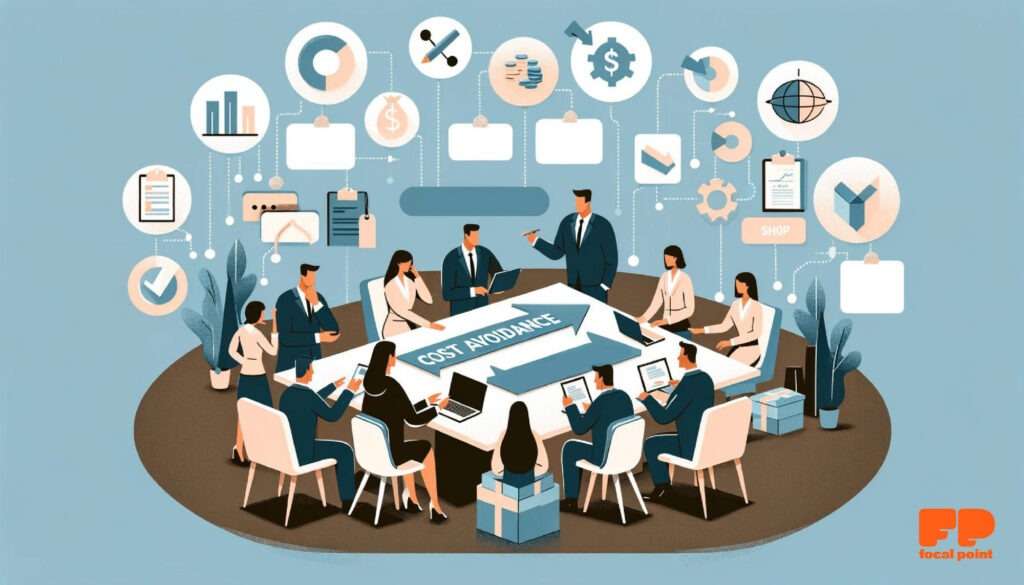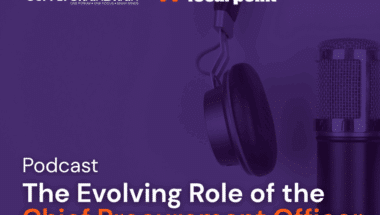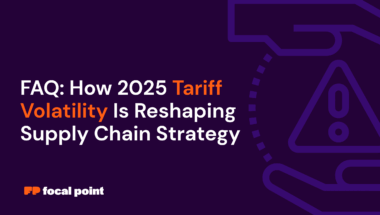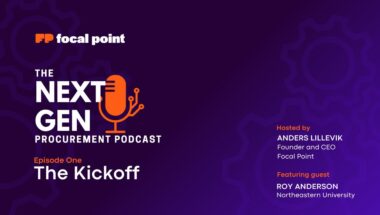As the head of procurement for your company in today’s fast-paced and competitive environment, you understand that procurement is crucial to driving your company’s cost savings and operational efficiency.
But have you leveraged cost savings and avoidance to strengthen your company’s economic stability?
This article will explore how best-in-class procurement strategies allow you to navigate between cost reduction and management strategies effectively.
We would also like to introduce you to Procurement’s first full orchestration layer, Focal Point, which can transform your approach to cost savings and avoidance.
We invite you to Book A Demo Today to see how your business can benefit from one centralized location that integrates all your systems. This innovation supports your procurement team and enhances stakeholder experiences. Join a procurement revolution where every choice propels you toward peak operational efficiency and financial success.
Key Points:
- Understanding the distinction between cost savings and cost avoidance is crucial for effective procurement and financial strategy.
- Effective enterprise-level procurement requires cost reduction and a comprehensive approach to managing current and future expenses.
- Centralizing procurement practices with tools like Focal Point paves the way for enhanced operational efficiency.
- Innovative platforms allow for integrating procurement systems, leading to better informed, data-driven decisions.
- A strategic approach to cost management services as a bedrock for sustained financial success.
Navigating Procurement: Cost Avoidance vs Cost Savings
Procurement stands at the forefront of driving cost savings and operational efficiency. Delving into the intricacies of cost savings and cost avoidance strategies is paramount for procurement teams to streamline their processes effectively.
Today’s leaders constantly search for innovative ways to maximize their cost savings. They focus not only on reducing expenses but also on scrutinizing the purchase price of goods and services. This careful consideration of both direct and indirect spend ensures a company’s financial health and its growth over time.
Unmanaged Spend: A significant portion of procurement spend often falls outside of the approved budget of finance or procurement departments, making it difficult to track and control
With this in mind, let’s explore the essential role of cost-saving and avoidance strategies. These strategies are foundational in building a strong economic base for any business.
The Significance of Cost Savings and Avoidance
In today’s economic environment, where every penny matters, understanding the value of your company’s current financial health is critical. By focusing on both savings and avoidance, businesses can protect themselves from financial setbacks. This dual approach helps solidify a firm’s economic defense.
Looking at both hard cost and the more indirect soft cost will help you gain a holistic understanding of your procurement performance. By seamlessly integrating cutting-edge technology solutions, you will empower your teams with advanced tracking capabilities to unearth hidden opportunities for cost saving.
A frequent error involves overlooking indirect expenses, which can result in exceeding the budget and possible monetary challenges. To avoid such scenarios, meticulous scheduling, regular checks on the budget, and preparing for unforeseen events are strategies that can assist in reducing these risks.
Pioneering Beyond Mere Cost Reduction
Moving towards effective cost management means going beyond spend reduction and immediate fixes. One tangible financial benefit of utilizing cutting-edge technology in your procurement process is being proactive in preventing unneeded spending. Looking ahead and avoiding potential financial issues gives companies a strategic advantage. This approach includes more than just reducing expenses; it’s about protecting your organization before troubles arise.
Understanding Cost Savings vs. Cost Avoidance
Grasping the difference between cost avoidance vs cost savings is crucial for your business’s financial health. These strategies, though often mixed up, fulfill distinct roles within corporate procurement. Hard savings, or cost savings, directly enhance your bottom line and are easily measured. In contrast, soft savings, or cost avoidance, are tricky to quantify but vital for averting future cost increases.
Definition of Cost Savings and Cost Avoidance
Cost savings denote reductions reflected directly in your financial statements. They result from negotiating lower costs, bulk purchases, or improved procurement practices. To track these savings, compare past and current spend to see the clear reductions.
Conversely, cost avoidance involves actions to prevent future higher expenses. This may include adopting new technologies or regular maintenance, which does not influence present finances but ensures long-term stability and prevents losses.
Examples of Hard and Soft Savings
- Cost Savings: Switching to a supplier who offers a 10% discount results in an immediate reduction of expenses.
- Cost Avoidance: Upgrading to energy-efficient machines to avert higher future energy costs.
The Impact on a Company’s Bottom Line
The blend of cost avoidance and savings fortifies financial success. Cost savings provide quick relief to expenses, enhancing profitability. Cost avoidance helps your business steer clear of financial challenges, ensuring ongoing efficiency. Mastering both is essential for effective financial management, paving the way for success in competitive environments.
Adopting platforms like Focal Point lets businesses streamline procurement and centrally oversee cost-saving strategies. It organizes all systems into a coherent structure of up-to-date info. This fosters a strategic approach to saving and avoiding costs, fostering enduring financial health.
Strategies for Effective Cost Savings: Cost Management
Maintaining significant cost reduction involves several strategies, from renegotiating terms to mastering digital transformation with cutting-edge technology. Each step is crucial for creating a more financially streamlined operation.
Budget Optimization:
Effective cost-cutting starts with a thorough budget review. This involves examining all expenses to find optimization opportunities. The goal is to align spending tightly with strategic objectives, trimming or redirecting finances to bolster efficiency.
You must also plan for contingencies and events that may be out of your control but could lead to potential future cost increases. Soft costs can be especially difficult to quantify and plan for.
Example of Cost Savings: Renegotiating Contracts for Better Rates
Renegotiating with suppliers can unlock notable savings, a stark contrast to sticking with existing terms. Successful negotiation is rooted in transparent dialogue and capitalizing on established relationships to secure mutually advantageous terms. This strategy often leads to immediate savings and improved conditions for future dealings.
Process Improvements: Implementing Lean Processes to Increase Efficiency and Reduce Costs
Adopting lean practices is an effective way to cut unnecessary costs. Review your processes, weed out inefficiencies, and incorporate automation to minimize manual tasks. This results in a more economical business model.
Technology Upgrades: Investing in Technology that Can Save Money in the Long Term
While initial tech upgrades may be pricey, they can lead to substantial savings on utility costs and enhance operational efficiency over time. From automating procurement processes to embracing cloud computing, the long-term financial benefits are considerable and ongoing.
Procurement technology is now at the forefront of business security and can greatly help you minimize procurement risks
Energy Efficiency: Ways to Reduce Utility Costs Through Smart Energy Management
Smart energy strategies can lead to utility savings. Integrating programmable thermostats and energy-efficient devices are steps in the right direction. Analyzing your energy consumption helps uncover immediate and enduring strategies to cut costs and achieve sustainability.
| Strategy | Description | Expected Savings |
| Budget Optimization | Aligning expenditures with strategic goals to eliminate waste. | 5-10% of total budget |
| Renegotiation with Suppliers | Securing better contract terms through deliberate negotiation. | Up to 15% per contract |
| Implementing Lean Processes | Streamlining operations to enhance efficiency and cut costs. | 10-20% in operational costs |
| Technology Investments | Upgrading systems and software to reduce long-term operational expenses. | Varies widely, based on technology |
| Energy Efficiency | Implementing energy management solutions for long-term utility reduction. | Up to 30% in utility expenses |
Tactics for Cost Avoidance
Empowering your business through cost-avoidance strategies significantly boosts financial health and competitive strength. Building a solid fiscal foundation requires understanding and executing proactive measures effectively. We explore tactics aimed at avoiding future costs, ensuring your company’s profitability continues.
Calculate Cost Savings With Preventive Maintenance
Regular preventive maintenance is a fundamental cost-avoiding measure. By keeping equipment in top shape, it helps you avoid costly repairs and unexpected downtime. This strategy not only prolongs your assets’ life but also ensures efficiency in operations. Consequently, it guards against unforeseen financial expenses.
Strategic Sourcing
Strategic sourcing looks past immediate costs, eyeing long-term supplier relationships that deliver superior value. This method considers the full spectrum of ownership costs, like service quality, dependability, and ongoing support. By adopting this approach, procurement decisions today avoid becoming heavy financial burdens in the future.
Employee Training
Employee engagement is paramount in avoiding unnecessary costs. Proper training and communication arm your staff with the necessary skills, minimizing errors and enhancing output. Well-informed employees also play a crucial part in identifying inefficiencies and driving a culture of cost awareness across the organization. Employee training will also:
- Enhance Efficiency: Identify and implement streamlined processes and technologies to slash operational costs.
- Enhance Visibility and Tracking: By emphasizing visibility with your employees in terms of hard and soft savings, organizations can comprehensively understand their procurement performance. Integrating an advanced procurement system provides advanced tracking capabilities, empowering teams to identify opportunities for cost optimization.
- Risk Management: Efficient risk management measures focus on recognizing potential problems before they grow into significant financial drains. It requires continuous monitoring and strategic planning to reduce risks. Employees can help identify and take early action against vulnerabilities to avoid financial difficulties and maintain uninterrupted business operations.
These strategies fortify your business against potential financial setbacks, ensuring longevity and prosperity.
Measuring and Monitoring Your Savings and Avoidances
In large-scale procurement, a well-defined system for tracking cost savings and avoidance is key. It ensures the financial well-being of the enterprise. This segment details strategies for effectively measuring and overseeing these aspects.
Your firm can simplify its procurement strategies with a system for all your systems. where you can view everything in one place.
Key Performance Indicators (KPIs)
KPIs are critical to gauge the success of cost management tactics. They act as milestones, guiding procurement efforts towards objectives. To adopt these indicators, teams must track specific metrics. These include total savings, reductions in spending categories, and avoidance over time. Analyzing such data is fundamental for strategic decisions and evaluating procurement achievements.
Regular Audits
Financial audits delve into an organization’s financial and operational sectors. They are essential for detecting potential for additional savings. By conducting frequent audits, firms enhance their risk management. This helps spot flaws that might otherwise lead to unwarranted costs.
Feedback Loops
Effective feedback mechanisms are crucial. They link the execution of strategies with upper management’s overview. These processes enable the adjustment of strategies to enhance outcomes. Thus, ensuring organization-wide participation towards mutual fiscal objectives.
To sum up, embedding tools like Focal Point into an enterprise’s structure simplifies integration of systems, data, and processes. It offers a seamless experience for stakeholders. Additionally, it boosts the procurement team’s effectiveness in their daily operations.
Integrating Cost Savings and Avoidance into Organizational Culture
Creating a culture of fiscal responsibility requires strong leadership, awareness of costs, and employee contributions. This creates a continuous improvement cycle. It ultimately strengthens the organization’s adaptability.
Leadership and Communication
Instilling a cost-conscious culture starts with strong leadership. Leaders must communicate the importance of cost savings effectively. They should set clear goals, connecting employee actions to cost management objectives.
Employee Involvement
Empowering employees to suggest cost-saving ideas is essential. When individuals contribute, they bring new insights that can optimize finances. This benefits the entire organization.
Continuous Improvement
Continuous improvement drives organizations toward excellence and cost efficiency. By incorporating cost-saving measures, they emphasize their ongoing value to the business strategy, reinforcing the importance of these initiatives.
Conclusion
As we look at strategic cost management, we’ve seen its vital role in financial planning and enterprise strategies. It seamlessly combines cost reduction and prevention. This blend is crucial for navigating today’s complex financial landscape.
Exploring the Dual Importance Cost Savings vs Cost Avoidance
The importance of cost savings and avoidance is deeply intertwined. Rather than being separate strategies, they are core to a dynamic, ongoing process. This process is crucial for minimizing unnecessary costs and driving sustainable growth.
Adopting a Holistic Approach
View cost management as an ongoing strategy, not a one-time action. With this mindset, your organization can leverage immediate savings and prepare for long-term financial health.
Striking the Right Balance
It is key to find the right balance between saving costs now and preventing them in the future. This proactive approach is essential. It helps make decisions that boost your organization’s resilience and competitiveness in the market.
| Immediate Cost Savings Opportunities | Long-Term Cost Avoidance Strategies |
| Renegotiated supplier contracts | Strategic sourcing from reliable vendors |
| Adoption of energy-efficient technologies | Regular preventive maintenance schedules |
| Streamlined operational processes | Comprehensive risk management protocols |
| Technology upgrades for improved efficiency | Employee training to enhance productivity and reduce errors |
What if you could view and do everything in one place?
Focal Point frames are transforming the procurement process. Learn More.



